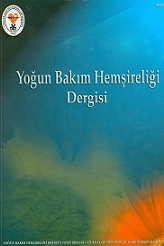OKSİJEN TEDAVİSİ VE HEMŞİRELİK BAKIMI/ GÜVENLİ OKSİJEN UYGULAMASI
Oksijen, hücrelerin fonksiyonlarını devam ettirebilmesi için önemli bir moleküldür. Oksijen tedavisi, hipokseminin belirti ve bulgularını önlemek amacıyla çevre atmosferinde bulunan oksijen konsantrasyonundan daha fazla yoğunlukta oksijen uygulanmasıdır. Uygulama kurallarına dikkat edilmediği takdirde hastalarda ciddi yan etki ve riskler oluşturabilir. Oksijen tedavisinin yararlarını ve zararlarını anlamak bu bakımdan oldukça önemlidir. Oksijen tedavisi yasal olarak hekim tarafından istem edilen bir tedavi şeklidir. Hemşire, hekim tarafından belirlenen oksijen tedavisi akım hızını ve uygulama yöntemini istemden kontrol ederek bilinçli bir şekilde tedaviyi uygulamalıdır. Oksijen tedavisi alan hastada güvenli oksijen uygulaması sağlanmalıdır. Özellikle bu dönemde COVID-19 hastalarında geleneksel oksijen tedavisine rağmen akut hipoksemik solunum yetersizliği olan hastalarda yüksek akımlı nazal oksijen tedavisi kullanımı yoğun bakım ünitelerinde artmıştır. Bu önemli tedavinin bir takım riskleri de bulunmaktadır. Bu nedenle doğru uygulanması, uyarı ve önlemlerin dikkate alınması çok önemlidir. Bu derlemede oksijen tedavisi, hemşirelik bakımı ve güvenli oksijen uygulamasının önemini vurgulamak amaçlanmaktadır.
Anahtar Kelimeler:
Oksijen tedavisi, hemşirelik bakımı, hasta güvenliği
OXYGEN THERAPY AND NURSING CARE/SAFE OXYGEN ADMİNİSTRATİON
Oxygen is an important molecule for cells to maintain their functions. Oxygen therapy is the administration of oxygen at a higher density than the oxygen concentration in the ambient atmosphere to prevent the signs and symptoms of hypoxemia. Failure to comply with the application rules may cause serious side effects and risks in patients. Understanding the benefits and harms of oxygen therapy is very important in this respect. Oxygen therapy is a form of treatment prescribed by a physician. The nurse should check the oxygen therapy flow rate and application method determined by the physician. It should apply the treatment consciously. Safe oxygen administration should be provided to the patient receiving oxygen therapy. Especially in this period, the use of high flow nasal oxygen therapy in COVID-19 patients in intensive care units has increased. This important treatment also has some risks. For this reason, it is very important to apply it correctly, to consider warnings and precautions. In this review, it is aimed to emphasize the importance of oxygen therapy, nursing care and safe oxygen administration.
Keywords:
Oxygen therapy, nursing care, patient safety,
___
- 1. Fara P. Joseph priestley: doctor phlogiston or reverend oxygen? endeavour 2010; 34: 84-86.
- 2. Ersoy EO, Topeli A. Solunum yetmezliğinde oksijen uygulama sistemleri. Turkish Journal Of Medical & Surgical Intensive Care Medicine/Dahili Ve Cerrahi Bilimler Yogun Bakim Dergisi 2017; 7(3): 99-105.
- 3. Demırel H, Kazan EE. knowledge levels of nurses about oxygen therapy ın Turkey. Int. J. Of Health Serv. Res. And Policy 2020; 5(1): 1-14.
- 4. Henderson L. Medical Surgical Nursing. America: Elsevier Saunders; 2006. p. 544-552.
- 5. Craven RF, Hirnle C, Jensen S. fundamentals of nursing human health and function. Çeviri: Uysal N, Çakırcalı E. Hemşirelik Esasları İnsan Sağlığı ve Fonksiyonları. 7. Baskı. Ankara, Palme Yayıncılık; 2014. p. 735-768.
- 6. Berman A, Snyder SJ, Frandsen G. Kozier& Eerb’s fundamentals of nursing concepts, process practise. 10nd ed. England, Pearson; 2016. p. 1267-1313.
- 7. Pilcher J, Beasley R. Acute use of oxygen therapy. Australian prescriber 2015; 38: 98-100.
- 8. O’Driscoll BR, Howard LS, Earis J, Mak V, British Thoracic Society Emergency Oxygen Guideline G, Group BTSEOGD. BTS guideline for oxygen use in adults in healthcare and emergency settings. Thorax 2017; 72: 1-90.
- 9. Kane B, Decalmer S, O'Driscoll BR. Emergency oxygen therapy: from guideline to implementation. Breathe 2013; 9(4): 246-253.
- 10. Asfar P, Singer M, Radermacher P. Understanding the benefits and harms of oxygen therapy. Intensive Care Medicine 2015; 41(6): 1118-1121.
- ISSN: 1302-0498
- Başlangıç: 1997
- Yayıncı: Yoğun Bakım Hemşireler Derneği
